event Report
Sunday 23rd – Wednesday 26th April 2023
A Tale of 2 Cities - The North West Highlights
Visiting MANCHESTER AND LIVERPOOL
A terrific trip organised by Avalon tours and our visits secretary
Margaret Wood, to surprise and delight even Liverpool and Manchester
cognoscenti with new experiences. A transformed Albert Dock and
Liverpool waterfront dominated by the iconic Liver Building topped
by its 12 foot mythical ; Media City at Salford Quays, no longer
gloomy canals and warehouses, but soaring modern architecture, a
feast of Lowry paintings set in a spacious gallery, and the wonky
Daniel Libeskind-designed northern branch of the Imperial War
Museum, and finally the glorious Manchester Victoria Baths, with
their colourful tiling and exuberant Art Nouveau stained glass
windows. North West Highlights were not a hype!
Day 1: 26 travellers set out by coach early on
April 23rd. En route to our Haydock Park hotel, we visited
Grade II listed Quarry Bank, a water powered cotton mill
built in 1784 next to the lovely Bollin River by Samuel Greg, a
wealthy Northern Irish immigrant with a paternalistic approach.
Workers had housing, medical care from Dr Holland. Children from
workhouses in crowded cities were brought to live in the apprentice
house, receiving better food and accommodation, and some education,
but working a 12-hour shift, 6 days a week, accompanied by the
thunderous noise of machines and a risk of losing fingers and even
arms in the machinery. There was little time for play.
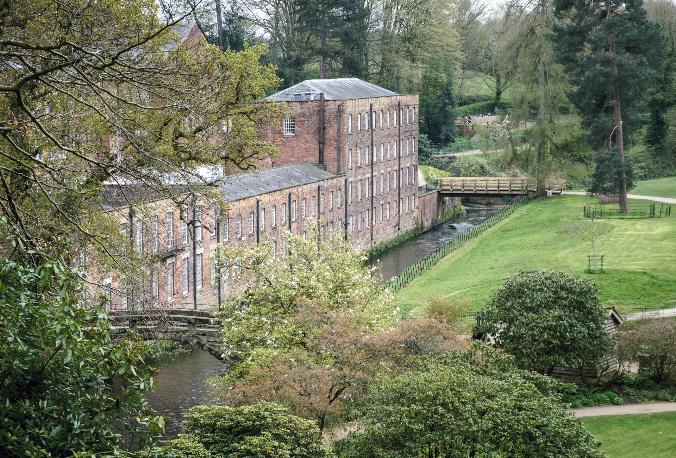
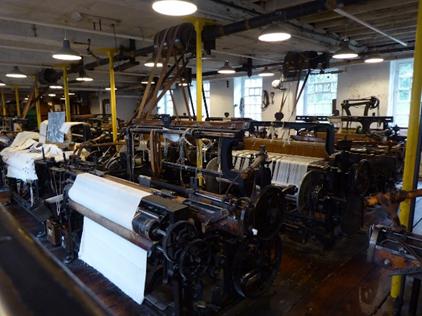
Quarry Bank Mill on the river Bollin
Cotton Milling Machines
We learned a lot about the cotton industry, a source of wealth (for
some), work (for many) and its inevitable decline with the arrival
of new forms of machinery and competition from abroad.
This proved an outstanding visit, with time to explore the mill and
the beautiful gardens and have lunch, before our guided tour of the
Apprentice House, finishing with a glass of Bucks Fizz and nibbles kindly
provided by Lisa, our Avalon guide, before setting off in the coach
to our hotel.

Here's where apprentices (and our group) paid attention in class
Day 2: Our Liverpool
visit started with a Beatles heritage tour, past places where they
grew up (quite middle class, as our guide pointed out, in pleasant
green areas), including, of course, Penny Lane (where quite a lot of
posing went on) and Strawberry Fields.
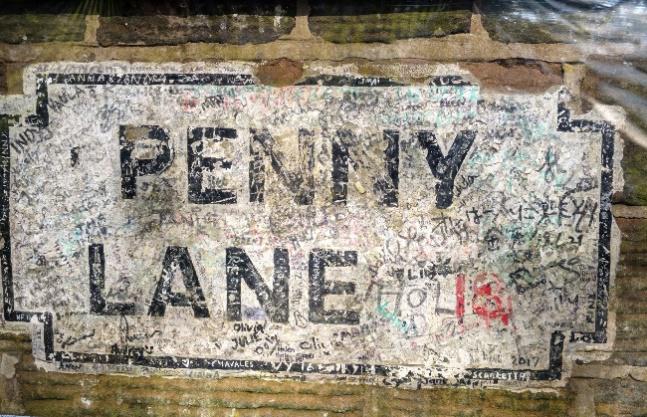
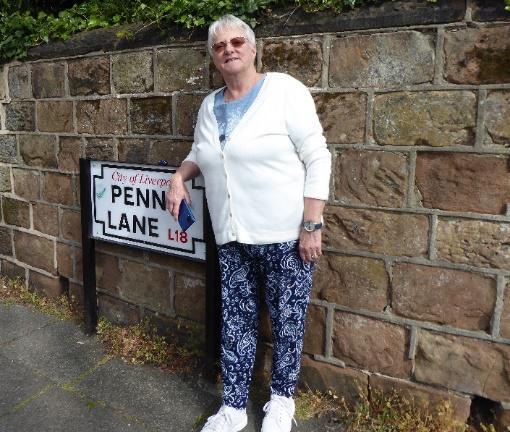
Paul McCartney has autographed the sign
on the left
Later when we visited the waterfront, many
of us visited the ‘Beatles experience’ in the Albert Dock. This
portrayal in a nearby sweetshop used original materials
….
the Fab Four in jelly beans
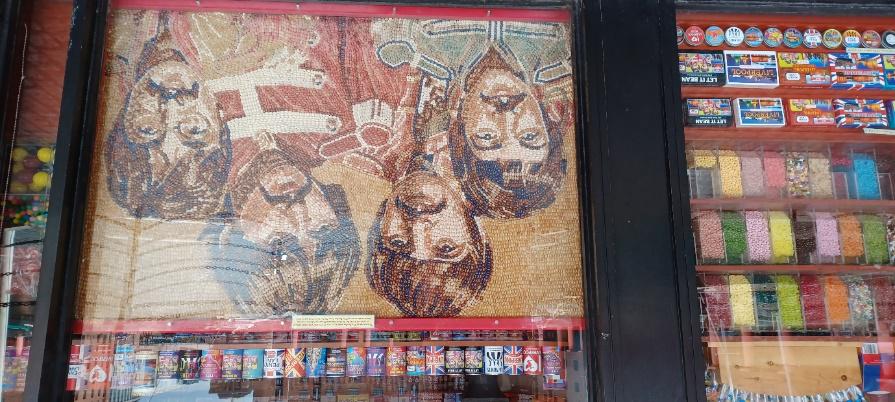
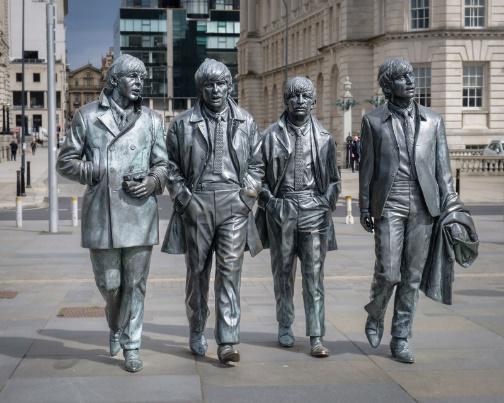
Our ‘Ferry ‘cross the Mersey’ was decorated in razzle-dazzle style, a wartime form of camouflage. We had fine views of the waterfront including the famous “three Graces “– the Liver Building, the Cunard Building and the Port of Liverpool building.
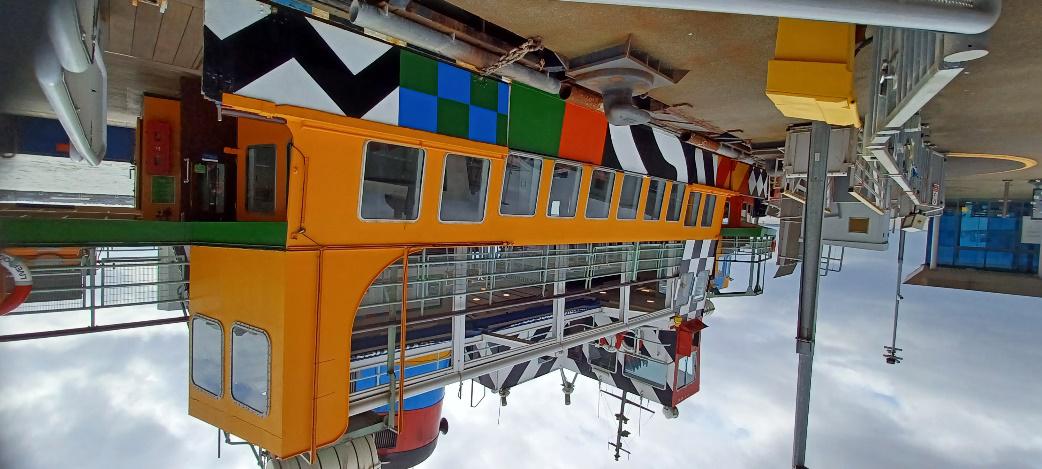
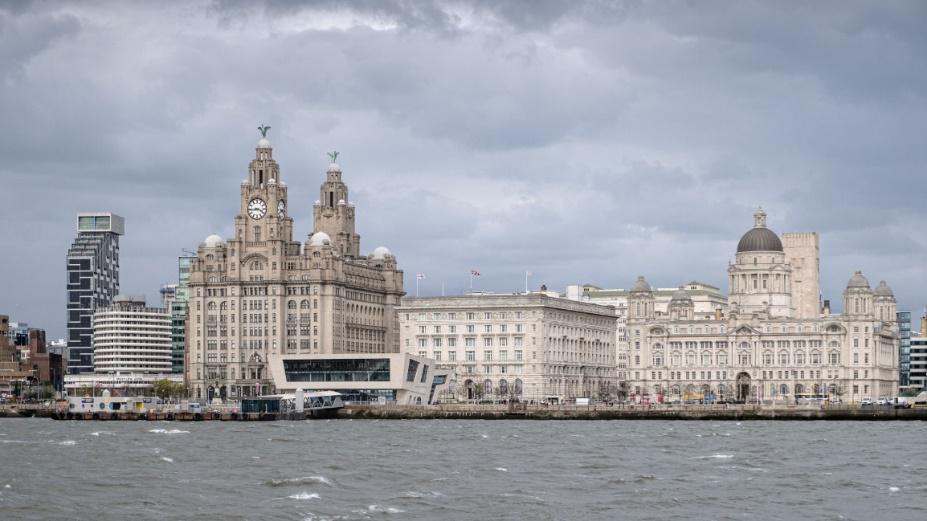
A breakaway group sneaked off to the two cathedrals. The Anglican cathedral in Gothic Revival style is the largest in Britain. Though begun in 1904 by architect Giles Gilbert Scott, who originally designed an even larger building, it was not completed until 1978. The Catholic cathedral, known locally as Paddy’s Wigwam, is in airy modern style by architect Frederick Gibberd. The stained glass is particularly lovely
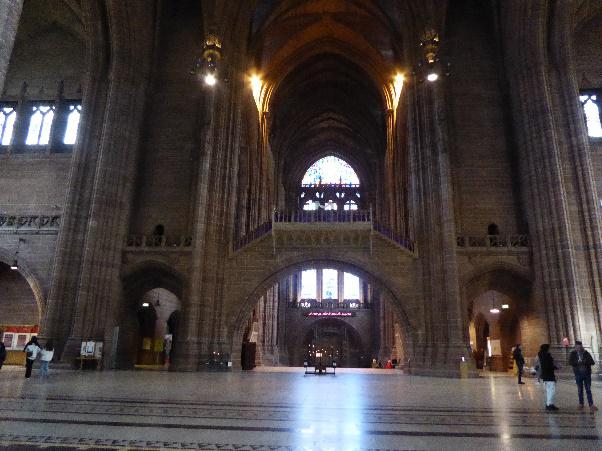
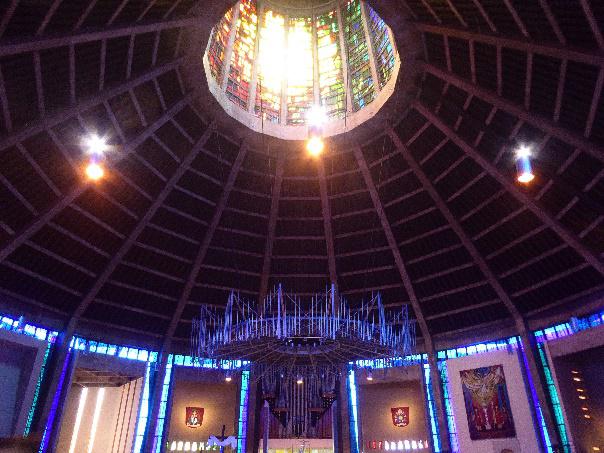
Anglican Cathedral
Catholic Cathedral
Liverpool is famous for its football teams. Just a quick aside on
the subject: Why are Liverpool’s refuse bins purple? Yes, you’ve
guessed! So as not to offend either Liverpool FC (red) or Everton FC
(blue).
Although the city council has now introduced blue bins for
non-recyclable rubbish. Imagine what Liverpool FC is making of that!
Day 3: Another day another city
After a good breakfast and an earlyish start, off we go to the
centre of Manchester. Our blue guide told us about the rivalry
between our two cities especially over the ship canal connecting
Manchester directly to the sea. Liverpool’s dominance due to its
seaboard meant it could levy high customs duties on imported cotton
and other raw materials. The ship canal was the largest in the world
when it opened in January 1894, and enabled the new Port
of Manchester to become Britain's third-busiest port despite
being about 40 miles (64 km) inland, allowing Manchester to undercut
Liverpool’s stiff levies.
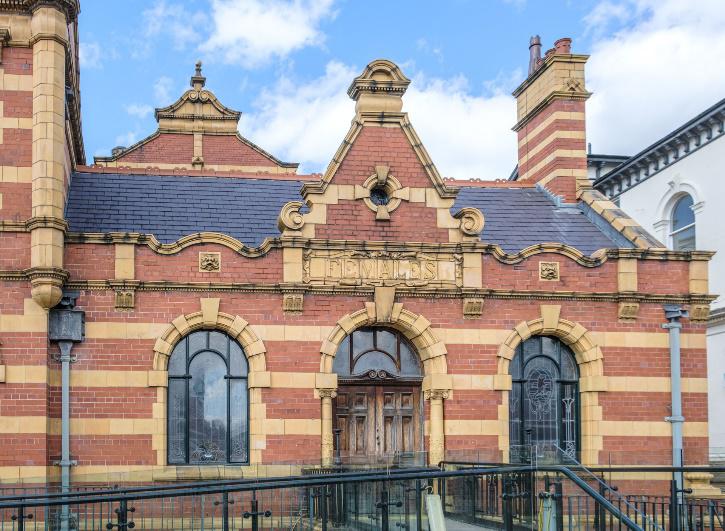 Manchester’s
industries flourished, reflected in many elaborate private and
public Victorian mansions. This is the frontage of the Victoria
baths, just one of 27 bathhouses to serve people without bathrooms
in their homes. Opened in 1906, they were in use until 1993. This
door is labelled ‘Females’. The 2 other entrances are for : 1st
Class Males, and 2nd class Males. Make what you will of that. More
on the interior later …
Manchester’s
industries flourished, reflected in many elaborate private and
public Victorian mansions. This is the frontage of the Victoria
baths, just one of 27 bathhouses to serve people without bathrooms
in their homes. Opened in 1906, they were in use until 1993. This
door is labelled ‘Females’. The 2 other entrances are for : 1st
Class Males, and 2nd class Males. Make what you will of that. More
on the interior later …
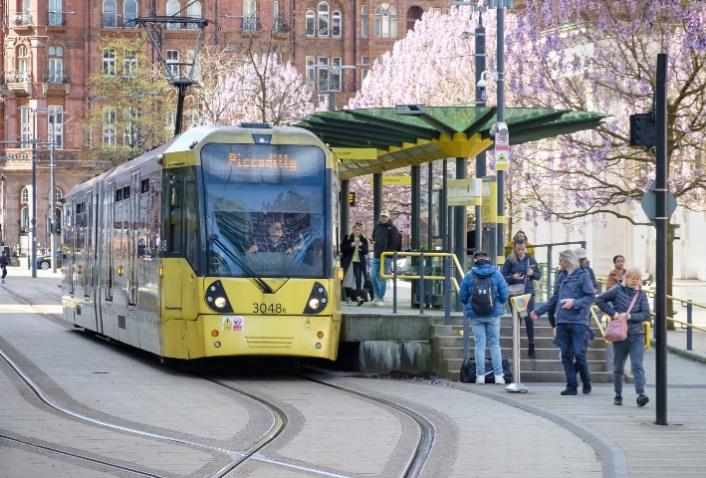 A
modern addition to the city
A
modern addition to the city
The trams are popular and cheap to use.
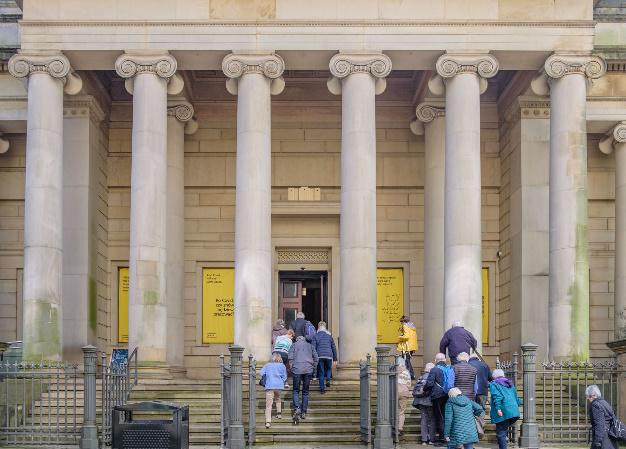 Manchester Art Gallery
Manchester Art Gallery
You can see eager culture vultures rushing in for coffee and a very quick peek at the art
Salford Quays
A revelation, Salford Quays (Media City) is populated by BBC North,
Imperial War Museum North, The Lowry, outlet shopping and many other
attractions.
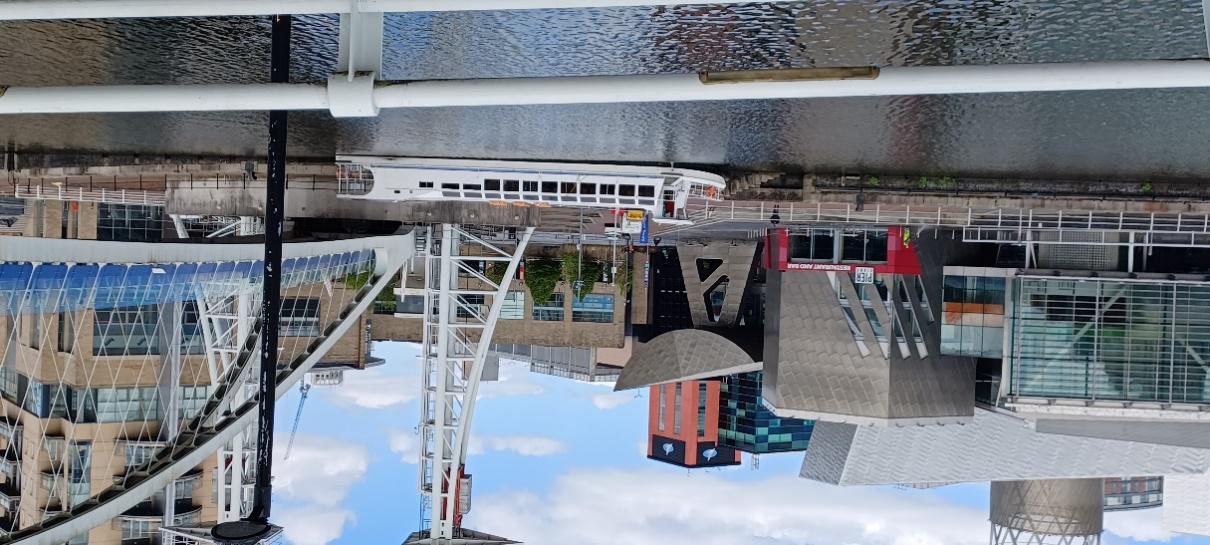
Modernity of Salford Quays
The BBC studios here feature the sets of
Coronation Street. Manchester City’s Emirates football ground at Old
Trafford is also nearby.
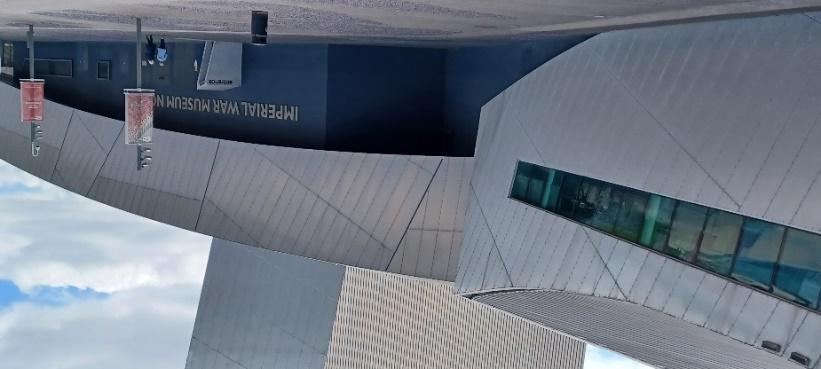 The
angles and jagged edges of the Imperial War Museum North are
designed to echo the chaos that results from war
The
angles and jagged edges of the Imperial War Museum North are
designed to echo the chaos that results from war
No description of Salford Quays would be complete
without a picture by Lowry.
So here it is.
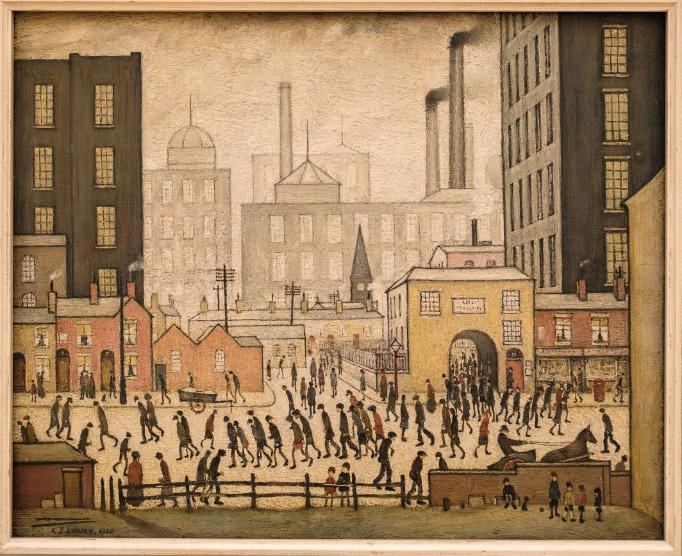
The Victoria Baths
These were a highlight of the Manchester visit. Earlier you saw the
exterior and a few facts about them. The interiors were stunning.
The biggest problem here is selecting the best views. But here goes
…
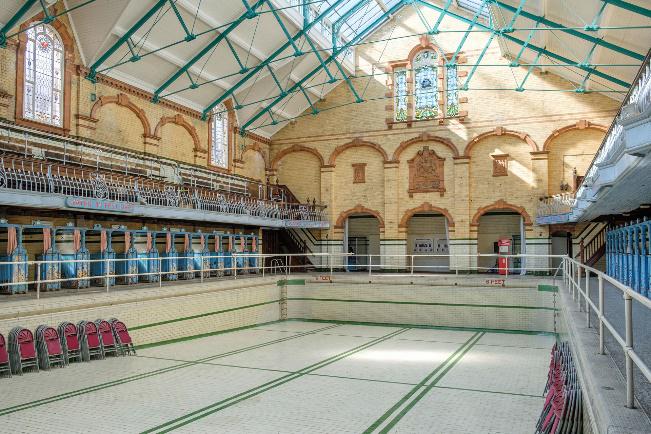
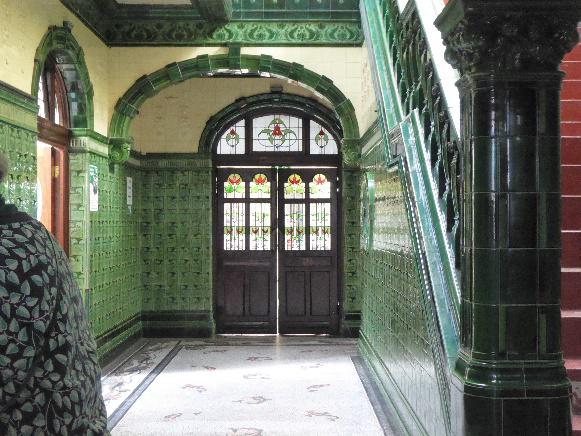
Class 1 Males bath
Entrance hall
For the sporting types:
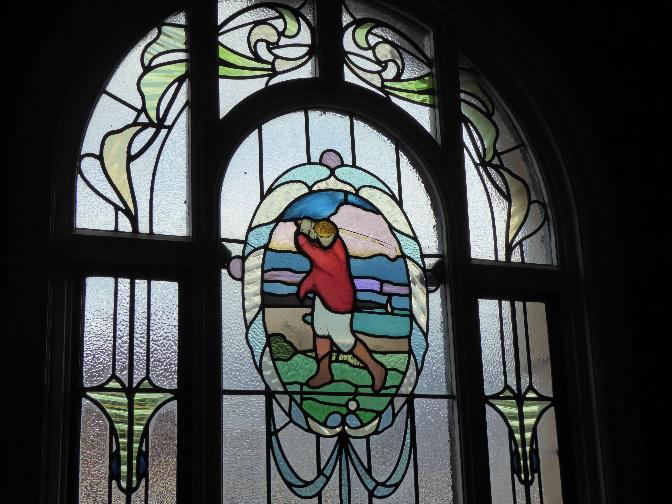
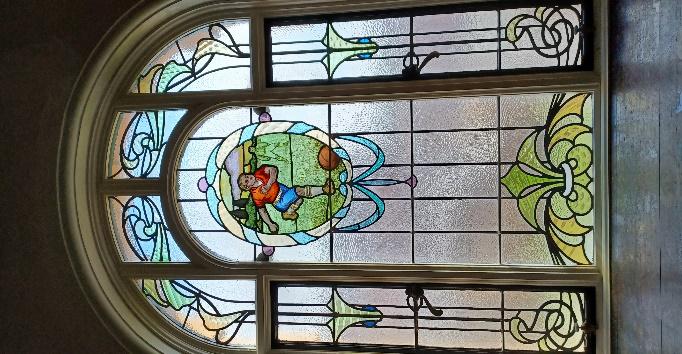
A huge drive to save the baths from
demolition was mounted after they closed in 1993, and the Victoria
Baths charitable trust was set up. They clinched success in 2003
after featuring BBC’s Restoration Programme and now are a venue for
public and private events – including weddings. The large baths are
rarely filled, but the Turkish baths are popular.
The finest examples of the glass artworks can be seen in the Turkish
Bath Rest Room where clients relaxed after their treatments.
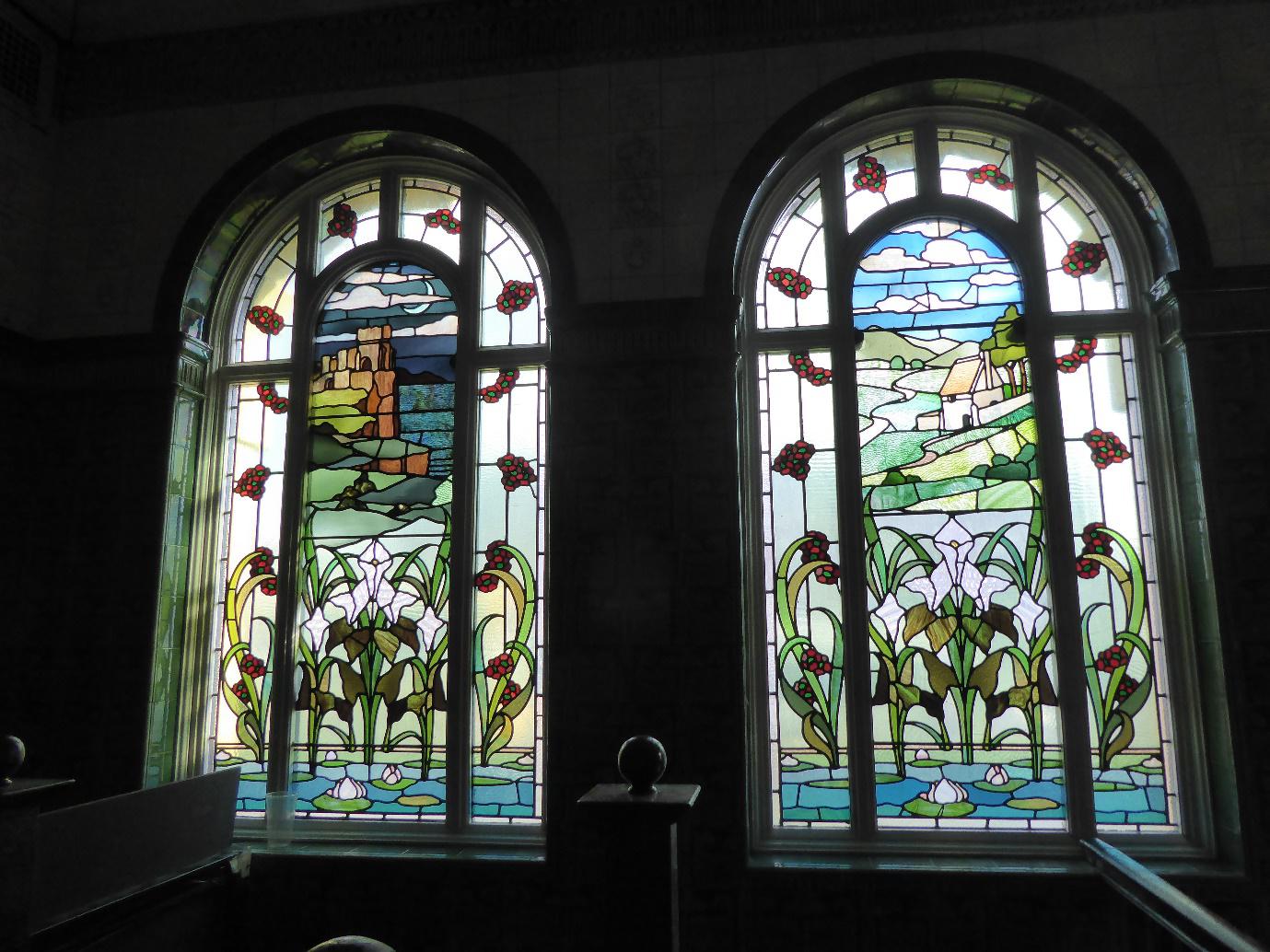
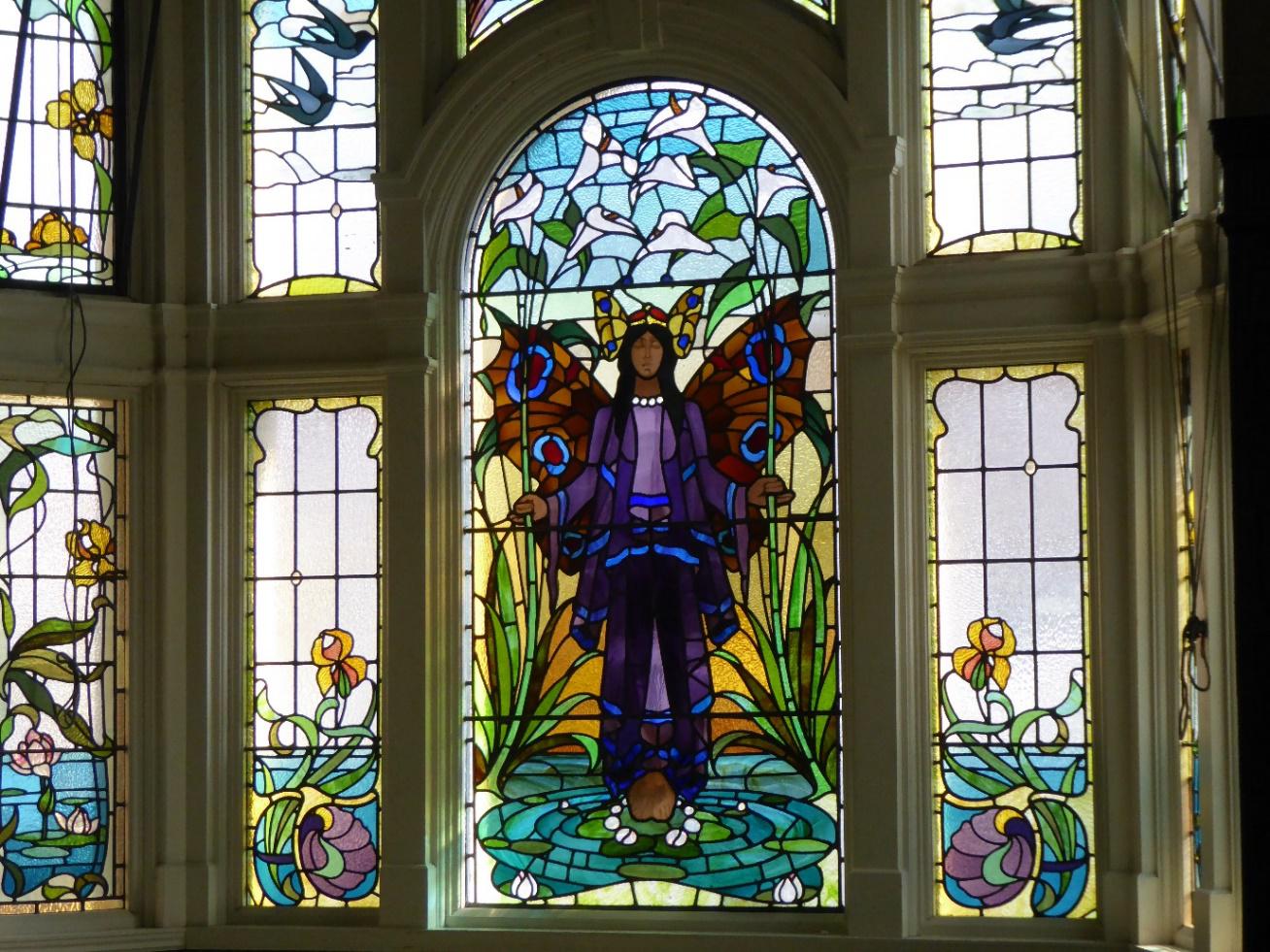
The Spirit of Purity
Day 4: Coming Home
We broke our journey home in Leicester, now famous as the
resting place of Richard III for over 6 centuries. His remains have
been reinterred in Leicester Cathedral, a more fitting place for a
king than a car park. The Richard III Visitor Centre tells the
astonishing story of his discovery and the work of archaeologists
and geneticists who found his grave and identified his remains.
 The body as originally found
The body as originally found
The angle of the head looks strange. It is thought
the grave was not quite long enough for his tall frame.
This visit, like every other, was superbly organised. A holdup on the M6 lost an hour, but Lisa contacted the museum which arranged for our speaker to give a detailed talk while we ate an excellent buffet lunch. The visit finished with a view into the actual spot where the grave was found.

Here endeth the report, with a huge vote of thanks to Margaret Wood, and to Lisa and Colin of Avalon Tours who made the visit so enjoyable and worthwhile.
